This article was co-authored by Soken Graf. Soken Graf is a Meditation Coach, Buddhist Priest, Certified Advanced Rolfer, and a Published Author who runs Bodhi Heart Rolfing and Meditation, a spiritual life coaching business based in New York City, New York. Soken has over 25 years of Buddhist training experience and advises entrepreneurs, business owners, designers, and professionals. He has worked with organizations such as the American Management Association as a consultant for training courses on such topics as Mindful Leadership, Cultivating Awareness, and Understanding Wisdom: The Compassionate Principles of Work-Life Balance. In addition to his work as a priest, Soken has certifications in Advanced Rolfing from the Rolf Institute of Structural Integration, Visceral Manipulation, Craniosacral Therapy, SourcePoint Therapy®, and Cold-Laser Therapy.
wikiHow marks an article as reader-approved once it receives enough positive feedback. This article received 26 testimonials and 100% of readers who voted found it helpful, earning it our reader-approved status.
This article has been viewed 360,277 times.
The practice of concentration meditation is one of the three main types of meditation practice: concentration, open awareness, and guided. The objective of concentration meditation is to develop a single-minded attention directed at some object: an image, a breath, a candle flame, or a word or phrase. Continually returning one's attention to this object develops one's ability to remain calm, focused, and grounded.
Steps
Practicing Concentration Meditation
-
1Find a quiet, private spot for meditation. Ideally, your meditation should be in a space free of pets, distracting noises or other people. Some people choose to set aside a corner of a room in their homes for the sole purpose of meditation. Others prefer to sit outside, weather permitting.[1]
- Sitting in the same spot might help increase your ability to concentrate. Your body will start to associate this area with meditation, and nothing else.
- Many people find that morning meditation helps them start their day. Others prefer to meditate at the end of the day. An office that's private offers an opportunity to meditate during the workday.
-
2Sit comfortably. Your body should not experience discomfort during meditation. The goal is to be comfortable in your body while allowing your attention to be focused completely on the object of concentration.[2]
- Wear loose, comfortable clothing that doesn't pinch or cut off circulation. Clothing that gathers behind the knees when you sit is not recommended.
- Concentration meditation is typically practiced either sitting or standing, but may be practiced lying down if necessary.
Advertisement -
3Set a timer. Because you'll need to train both your body and your mind to meditation, start with short sessions, 5-10 minutes in length. You can repeat these short sessions throughout the day.[3]
- Use a timer rather than a clock so that you won't have the distraction of checking to see how much time you have left. If you are sleepy, it may also keep you from falling asleep for longer than the time you've allotted.
- Gradually work you way up to longer intervals of time. After several weeks of 10-minute meditation, for example, increase the time by 5 minutes, then 10 minutes.
- There are many meditation timer apps available to help you, or you can use an ordinary kitchen timer. It doesn't matter what you use to set the time, so long as you let go of the need to attend to it.
EXPERT TIPSoken Graf is a Meditation Coach, Buddhist Priest, Certified Advanced Rolfer, and a Published Author who runs Bodhi Heart Rolfing and Meditation, a spiritual life coaching business based in New York City, New York. Soken has over 25 years of Buddhist training experience and advises entrepreneurs, business owners, designers, and professionals. He has worked with organizations such as the American Management Association as a consultant for training courses on such topics as Mindful Leadership, Cultivating Awareness, and Understanding Wisdom: The Compassionate Principles of Work-Life Balance. In addition to his work as a priest, Soken has certifications in Advanced Rolfing from the Rolf Institute of Structural Integration, Visceral Manipulation, Craniosacral Therapy, SourcePoint Therapy®, and Cold-Laser Therapy.Certified Meditation Coach
 Soken Graf
Soken Graf
Certified Meditation CoachDid You Know? To start seeing improvements in your ability to focus, you need to meditate for at least 8 1/2 minutes a session. Over time, you can increase that to as much as 25 minutes, but I don't think you really need to go much over that.
-
4Allow your eyelids to relax. You may choose to close your eyes, or to keep them partially open without being entirely focused. If visually focusing on an object of concentration, make sure your eyes are entirely relaxed.[4]
- Never strain your eyes or hold tension in your eyes. This includes your eyelids, the small muscles around the eyes, and the muscles which move the eyes.
- You may hold your lips in a slight smile, lips closed.
-
5Direct your attention to the focus of concentration. Many people chose to focus on the breath. Do not force your attention, or become frustrated with yourself when distracted. When distracted, simply redirect your attention. This form of meditation is not intended to be stressful or coerced.[5]
- If you have chosen to focus on the breath, turn your attention to your breath as you inhale and exhale. One complete inhalation and exhalation will be 1 breath. In your mind, concentrate on the number 1. Then take another breath, all the way in and all the way out. This is breath 2. Continue until you've counted 10 breaths. Then start again. Holding your attention to this count will deepen your concentration meditation.
- Your choice of objects may vary depending on the day, the situation in which you find yourself, or the experiences you have as you continue your practice. Allow yourself to experiment with different objects.
- Enjoying the practice of concentration is a pleasure, but not a goal. Allow your feelings to arise as they will. Notice them, and let them go.
-
6Set aside distracting thoughts. The goal of concentration meditation is to train the mind for continual focus. When thoughts or feelings arise, notice them, and return your attention to the object of its focus.[6]
- If you start to feel disappointment, frustration, or irritation with yourself for being distracted, this feeling itself is a distraction. Notice the feeling, and return to the object of concentration.
- There is a subtle balance between holding onto the object of concentration too tightly and holding on too loosely. When concentration is held too tightly, you will feel a certain tension that impedes your spiritual progress. When held too loosely, you'll find yourself distracted.
- Some people experience a shift in their awareness between themselves and the object of concentration. You may find that you feel a certain sensation of merging with the object. Do not be afraid: this is a common sensation, and a sign of deeper insight.
Positioning Your Body
-
1Choose to stand for meditation. This posture allows meditation free from the distraction of physical ailments, the feeling of having one's legs "fall asleep" and may be beneficial for people who work in a seated posture for much of the day.[7]
- Stand with the weight on the balls of the foot, and bend your knees slightly so that your back is straight.
- Turn your toes slightly inward, with legs shoulder-width apart.
-
2Choose to sit for meditation. The traditional position for meditation is sitting, either on the ground or on a "zafu," a small round cushion. Modern practitioners may choose to sit in a chair if necessary for physical support. The seated method allows for greater stability.[8]
- If using a zafu, position it in a quiet area. You may choose to place it on a mat or blanket to prevent your knees from resting on the hard ground.
- Lower your body onto the zafu. Position your buttocks on the top third of the zafu, so that your buttocks are slightly raised, and your knees are directed towards or resting on the floor. Use a cushion under your knees if you need to.
- Imagine the top of your head being pulled with an imaginary string towards the sky, straightening the spine. Feel a soft curve in your lower spine.
-
3Arrange your hands. In a seated position, you can allow your hands to rest, palms up, on your thighs. You may also choose a more traditional position, hands together.[9]
- Holding arms slightly apart from the body, gently bring your hands together as if holding a beach ball. Place your left hand over your right hand, palms up, thumbs together.
- If your arms are short, you can rest them on a cushion placed on the thighs. This is particularly helpful if you are seated on a chair.
Selecting an Object
-
1Choose an object for your concentration meditation. The object you select should be one which is easy for your attention to rest upon, which brings pleasant emotions without too much excitement or boredom. If you select an object which has meaning for you, try not to allow its associations to distract you. The goal is to focus on the object itself.[10]
- Choosing an object of the senses is an ancient meditation technique. Some traditions encourage meditation upon the elements (earth, air, fire, water). Others focus on sacred places within the body, or chakras.
- There are literally thousands of possible objects from which to choose. Popular choices include: the flame of a candle, a sacred symbol or object from the religious tradition meaningful to you, a word or short phrase that is sacred to you.
- Remember, it is the training of the mind, not the object, that is the goal of concentration meditation. A skilled practitioner might focus on a box of tissues with equal success.
-
2Light a candle. Focusing your attention on the flame of a candle is called Tatrek meditation. Position your body far enough away from the candle so that you can easily focus your gaze upon it.
- Make sure that your candle is placed in a quiet, draft-free area. A flame that dances in the breeze will create worry that its flame will be extinguished.
- Select an unscented candle for optimal concentration. A scented candle may distract from your meditation.
-
3Read a short passage from a sacred text. In some traditions, this type of meditation is known as Lectio Divinio, or "divine reading." Read slowly. A certain word or phrase may draw your attention. When it does, allow your attention to remain upon this word or phrase for your meditation practice.
- You may memorize the word or phrase, or you may keep the pages of your text open before you, reading them again as needed.
- The words of the text may become abstract, losing their former meaning. This is fine. The words themselves are not important. They are just a pathway towards the meditative practice.
-
4Choose the breath. For concentration meditation, close the mouth and breathe through the nose, unless the nose is occluded. Breathing through the nose allows a greater range of sensation.[11]
- The concentration on breathing meditation is called Zazen meditation. This form of meditation encourages the practitioner to focus on the fact of the breath. Counting each breath, starting at 1 and continuing through 10, is a form of Zazen practice.
- Concentration on the physical sensations of breathing is called Vipassana meditation. These sensations may be outer, such as the feeling of breath against one's upper lip, or inner, such as the awareness of breath flowing into the upper, middle, and lower lung area. It may also incorporate the awareness of breath flowing to particular regions of the body known as chakras.
References
- ↑ http://www.wildmind.org/background/can-anyone-meditate/time-and-place
- ↑ http://www.insightmeditationcenter.org/books-articles/articles/postures-for-meditation/
- ↑ http://www.insightmeditationcenter.org/meditation-timers/
- ↑ http://www.trans4mind.com/jamesharveystout/concent.htm
- ↑ http://www.trans4mind.com/jamesharveystout/concent.htm
- ↑ http://www.self-guided.com/concentration-meditation.html
- ↑ http://www.buddhaweekly.com/the-better-way-standing-meditation/
- ↑ http://www.insightmeditationcenter.org/books-articles/articles/postures-for-meditation/
- ↑ http://www.insightmeditationcenter.org/books-articles/articles/postures-for-meditation/
About This Article
To do concentration meditation, start by sitting comfortably in a spot that’s free from noise and other distractions. Next, close your eyes and focus on your breath as you count “1” on your first inhalation and exhalation. Then, count “2” on your second inhalation and exhalation, and so on until you get to 10. Concentrate as much as possible on your count, but if your thoughts wander, recognize that you’ve lost focus before returning to counting your breaths. Try meditating in short, 5-10 minute sessions, and repeat them throughout the day. To learn how to focus your meditation on a phrase or an object, keep reading!

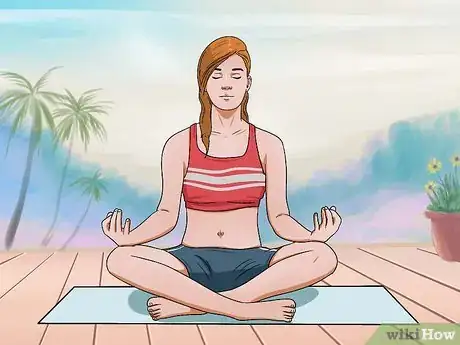
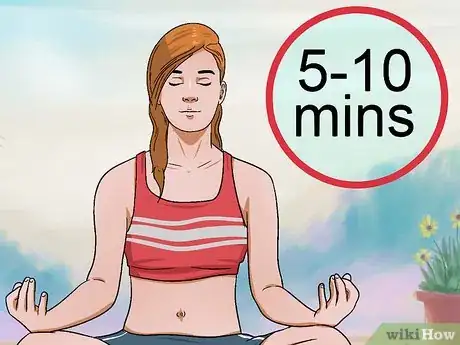
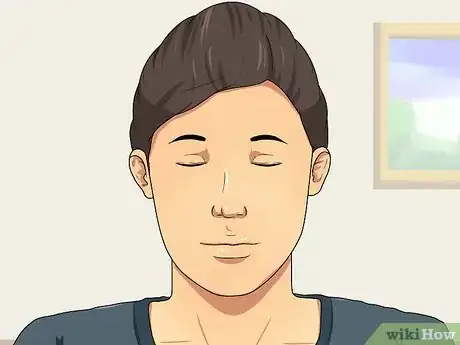


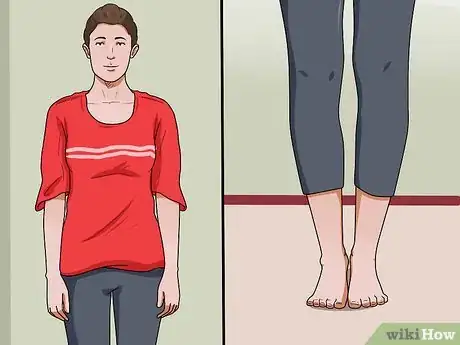
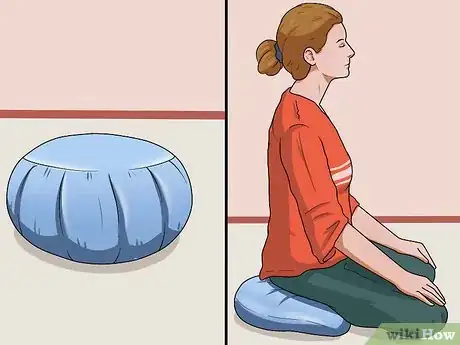
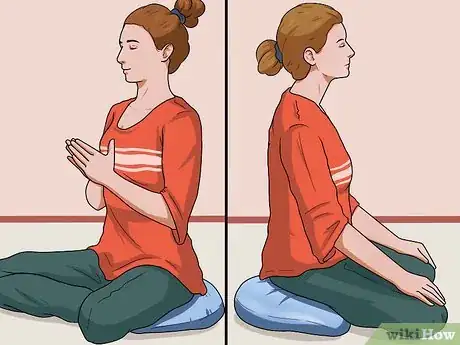
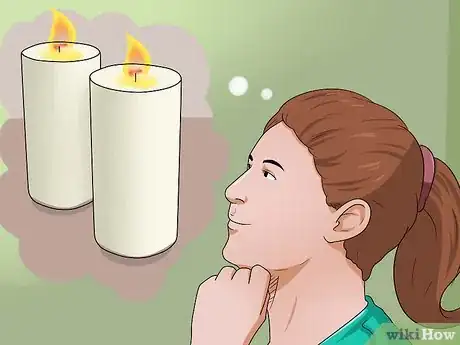
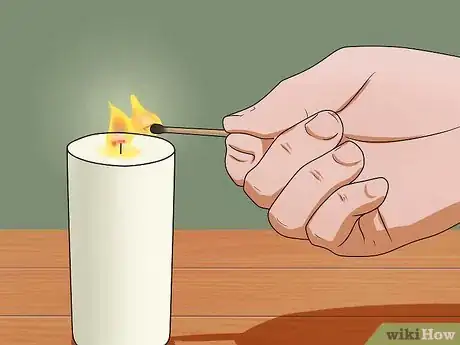
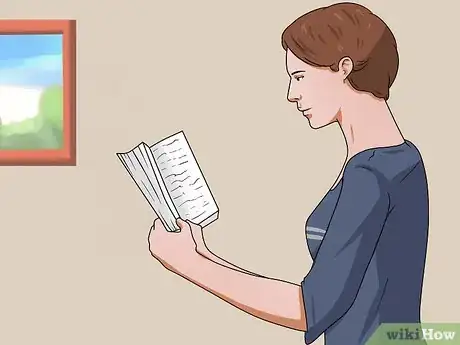












-Step-18-Version-2.webp)


















































